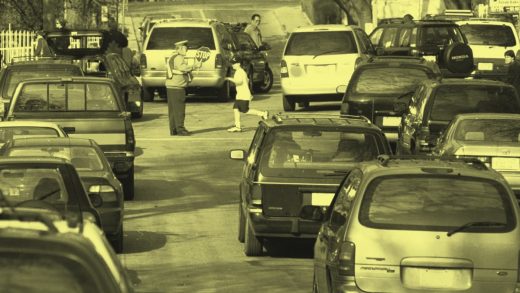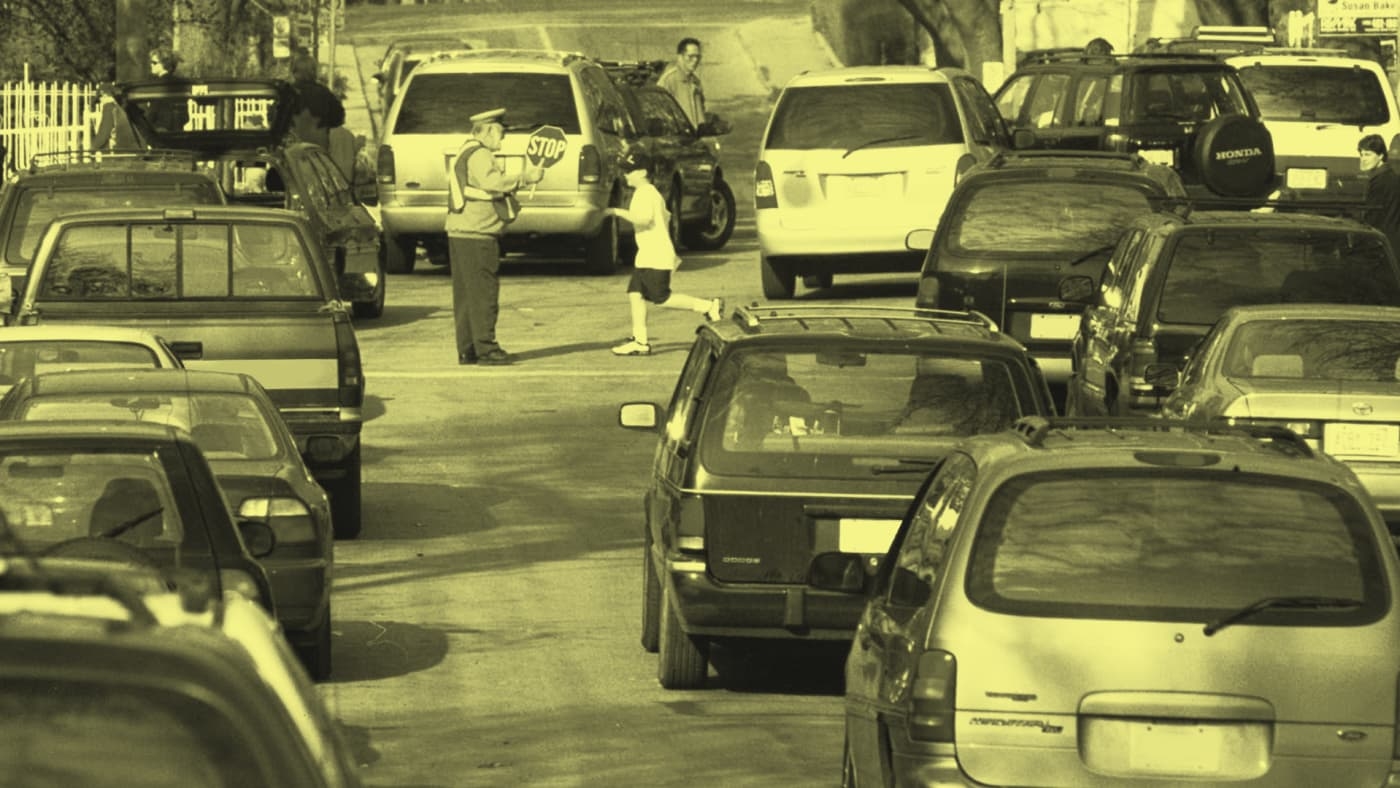Schools are banning dropping kids off in cars–to save kids’ lives
I vividly remember the morning scene at my elementary school in Oakland, California. Every day, a parade of cars would snake in a circle around our concrete playground, dispensing kids in designated zones marked with lurid traffic cones. The line of cars waiting to get inside the school stretched up the block. Stress levels generally ran high. Once, my father, facing pressure from an irate parent behind him, accelerated the car over my foot as I struggled to pull my backpack out the door.
Not only is the school drop-off a breeding ground for injuries and crashes as stressed-out parents try to maneuver cars around scrambling kids, research is proving that it also wrecks the ambient air quality around schools, potentially setting up children for health issues later in life. So now, a growing number of schools across the U.K.–and a handful of other countries–are moving to ban school drop-offs by car.
Nine schools in Edinburgh have prohibited car drop-offs, and the London neighborhood of Hackney, which has been dabbling in child-centered design initiatives, has shut down the roads outside of five schools, and more neighborhoods are expected to follow suit. Several other U.K. cites have taken similar measures, as has Vienna, where a new “school street” initiative bans cars from the roads leading up to a school between 7:45 and 8:15 a.m., making more space for cleaner and safer modes of transit like walking and biking. Bolzano, Italy, pioneered a similar initiative decades ago, and now 80% of kids there walk, bike, or bus to school.
In the U.K., the nonprofit Living Streets is providing support to around 2,000 schools that have expressed interest in ending car drop-offs. Just decades ago, according to Living Streets, 70% of kids in the U.K. walked to school every day; now, it’s less than half, and 1 of every 4 cars on the road in the morning are ferrying a child to school. A joint report from the Guardian and Greenpeace last year found that the air surrounding over 2,000 schools across England and Wales contains levels of pollution well above the legal limit.
In many cases, the push to end car drop-offs is coming from the students themselves. A spokesperson for a primary school in Stockport, a town in Greater Manchester, told the Guardian: “We have a pupils’ eco-council at the school and they decided that, because of their concern around air pollution and global warming that we have been learning about, they wanted their parents to stop driving to school.” Some particular causes for concern among students include spikes in asthma and other lung problems, which can become chronic as kids age, and traffic injuries and fatalities around schools. Some students have staged protests to call attention to the issues: In Alloa, Scotland, children lay down in the road outside of their school and “played dead” to highlight both the health and safety concerns that arise from an overdependence on cars.
Overdependence is a key word here, however. Living Streets is under no illusion that reversing trends in car usage will be easy. “A lot of parents don’t want to drive all the way but feel there is no other option,” Kathryn Shaw, spokesperson for Living Streets, told the Guardian. But the nonprofit has developed a framework for schools and districts to follow as they work to prioritize walking and cycling to school over driving. For one thing, schools should assess how far their students have to travel to reach the school, and encourage parents and caregivers to form groups that could all walk together–like a carpool, but on foot or bike. Because many parents (rightfully so) are concerned about safety, more schools could implement road closure policies during school start and end times and introduce speed limits to create safer streets. And for more rural districts, where students have to travel longer distances to school, the health concerns around car drop-offs should underscore the need for good and comprehensive bus services to reduce emissions and improve safety.
(13)



